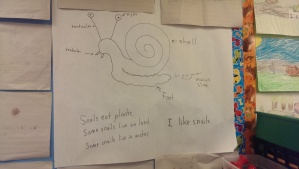Teacher-candidates apply principles of differentiated instruction, including theories of language acquisition, stages of language, and academic language development, in the integration of subject matter across the content areas of reading, mathematical, scientific, and aesthetic reasoning.
As a teacher candidate it is so important to understand the research that lies behind differentiating a classroom lesson for the various kinds of learners that I have in my classroom. Students from every walk of life and having any number of learning needs and not every lesson that I plan is going to work for all of them. It is up to me to plan lessons and activities are appropriate for everyone.
In my internship classroom I have a lot of students who need me to teach and do things differently in the way that they show they are making progress. In order to show my competency in this a area I have attached a copy of a lesson and assessment that I differentiated and gave my students.
This assessment shows my proficiency in this area because I had to intentionally plan times for my students to show what they know in their own way. I also had to plan a way for all of my students to be able to understand the information that I presented to them.
In giving this lesson to my students I learned that it is more difficult to differentiate ahead of time then you think. There were times that I had to differentiate my lessons in the middle of a lesson; this is differentiating from the differentiation that I had already planned ahead of time. I learned It is okay to have a plan but that it is also okay to stray from your plan if that is what the students need.
This lesson benefitted my students because the students that struggle to show what they know and the students who already know the material a way to represent their thinking. All of my students are talented and intelligent in their own way. It is my job to work as hard as I have to and be as flexible as I need to in order to get them to learn.
In the future I will continue to work as hard as I have to because my differentiations are not always going to work the first time. You can never be for positive that the changes you are making are going to be the right one. It is my job to continue to make changes that they need and continue to try things until you find something that works so all of the students in your class can learn.



